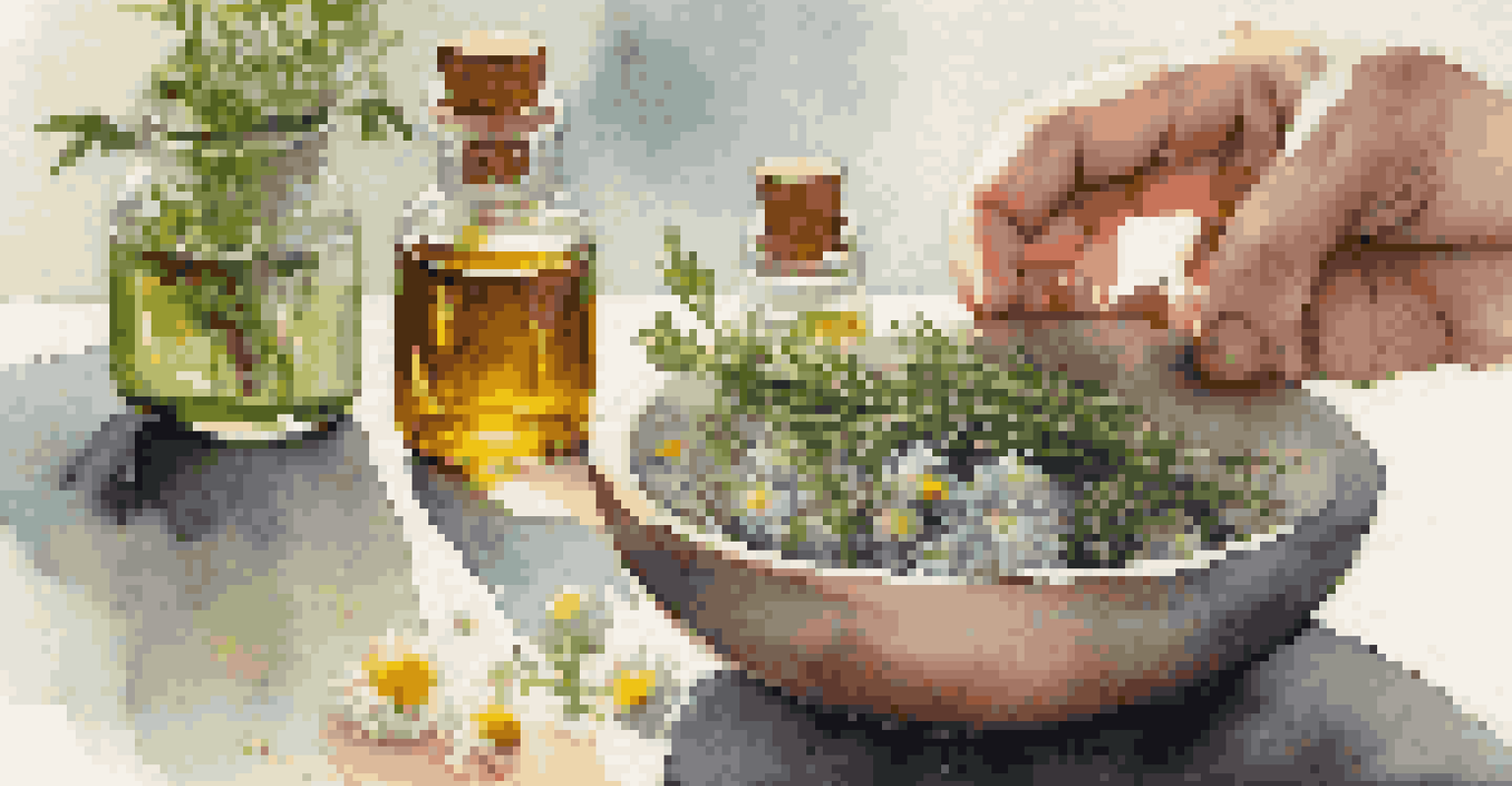Essential Oils for Stress Relief: Techniques for New Users

Understanding Stress and Its Effects on the Body
Stress is a common experience that can affect our physical and mental health. It triggers a fight-or-flight response, leading to increased heart rates and tension in the body. When stress becomes chronic, it can contribute to issues like anxiety, fatigue, and even chronic illnesses.
The greatest weapon against stress is our ability to choose one thought over another.
Many people seek natural remedies to manage stress, and essential oils are a popular choice. Derived from plants, these concentrated extracts can engage our senses and promote relaxation. Understanding how they work can empower us to tackle stress more effectively.
By learning about the connection between scent and emotional well-being, we can harness the soothing power of essential oils. This knowledge is especially beneficial for new users looking for simple and effective ways to integrate these oils into their daily routines.
Choosing the Right Essential Oils for Stress Relief
Not all essential oils are created equal, and some are more effective for stress relief than others. Popular choices include lavender, chamomile, and bergamot, known for their calming properties. Each oil has unique benefits, so it's essential to find the ones that resonate with you.

For instance, lavender is often lauded for its ability to promote relaxation and improve sleep quality. Chamomile can help ease anxiety and tension, while bergamot can uplift mood and reduce feelings of stress. Experimenting with different oils can help you discover what best supports your well-being.
Stress Impacts Health and Well-Being
Chronic stress affects both physical and mental health, leading to issues such as anxiety and fatigue.
When selecting essential oils, consider factors like scent preference, intended effects, and any potential allergies. Quality matters too, so opt for pure, high-quality oils from reputable sources to ensure you experience their full benefits.
Simple Techniques for Using Essential Oils
Getting started with essential oils doesn't have to be overwhelming. One of the easiest methods is aromatherapy, which involves inhaling the scent of the oils. You can use a diffuser or simply add a few drops to a cotton ball and breathe deeply to enjoy their calming effects.
Essential oils are a gift from nature that can help us take control of our health and well-being.
Another technique is topical application, where you apply diluted essential oils directly to your skin. Mixing the oils with a carrier oil, like coconut or jojoba oil, is crucial to avoid irritation. Just remember to conduct a patch test first to ensure your skin reacts positively.
You can also create DIY stress relief blends by combining different oils. For example, mixing lavender with sweet orange can create a refreshing yet calming blend. These blends can be used in diffusers or in massage oils, making them versatile tools in your stress relief arsenal.
Incorporating Essential Oils into Your Daily Routine
Integrating essential oils into your daily life can help you manage stress more effectively. Consider starting your day with a few drops of energizing oil, like peppermint, to boost your mood and focus. You might find that this simple addition can set a positive tone for your day.
During work or study sessions, keep a roller bottle of your favorite calming blend nearby. Whenever stress levels rise, take a moment to apply it to your wrists or neck, inhaling deeply to regain your composure. This small practice can create a pause in your day, allowing you to reset.
Essential Oils Aid Stress Relief
Certain essential oils, like lavender and chamomile, are particularly effective in promoting relaxation and reducing stress.
In the evening, create a relaxing environment by diffusing soothing oils like lavender or chamomile in your space. This can signal to your body that it’s time to unwind, making it easier to transition into a restful night’s sleep.
Making Your Own Essential Oil Blends for Stress Relief
Crafting your own essential oil blends can be a fun and creative way to personalize your stress relief routine. Start by choosing a base oil, like lavender, and then add complementary oils based on your preferences. For instance, combining lavender with frankincense can enhance relaxation.
When creating blends, the general rule is to use a ratio of 2-3 drops of essential oil per 1 teaspoon of carrier oil. This ensures the oils are diluted enough for safe application. Keep experimenting until you find the perfect mix that resonates with your senses and your needs.
Don't forget to document your creations! Keeping a journal of your blends and their effects can help you refine your recipes over time. This practice not only enhances your experience but also allows you to share your insights with others on a similar journey.
Safety Tips for New Users of Essential Oils
While essential oils offer many benefits, it's essential to use them safely, especially for new users. Always dilute oils before applying them to your skin, as undiluted oils can cause irritation or allergic reactions. A good rule of thumb is to use a carrier oil to minimize any risks.
It's also crucial to research each oil's safety profile, especially when pregnant or nursing, as some oils may not be safe during these times. If you have existing health conditions, consult a healthcare professional before using essential oils to ensure they're suitable for you.
Safety and Community in Oil Use
Using essential oils safely is crucial, and joining a community can enhance your learning and experience with them.
Lastly, be mindful of how you store your essential oils. Keep them in a cool, dark place to preserve their potency. By following these safety tips, you can enjoy the benefits of essential oils while minimizing potential risks.
Finding Community and Support in Essential Oil Use
Joining a community of like-minded individuals can enhance your essential oil journey. Online forums, social media groups, and local workshops can provide valuable insights and support as you explore different oils and techniques. Sharing experiences can also help you learn from others and find new ways to incorporate oils into your life.
Look for resources such as blogs, YouTube channels, or podcasts that focus on essential oils for stress relief. These platforms often offer tips, recipes, and personal stories that can inspire you and deepen your understanding. Engaging with others can make the learning process more enjoyable and fulfilling.

Remember, you’re not alone on this journey. Building a support network can empower you to experiment, share, and grow in your knowledge of essential oils. Embrace the connections you make along the way, as they can turn your stress relief practice into a shared experience.